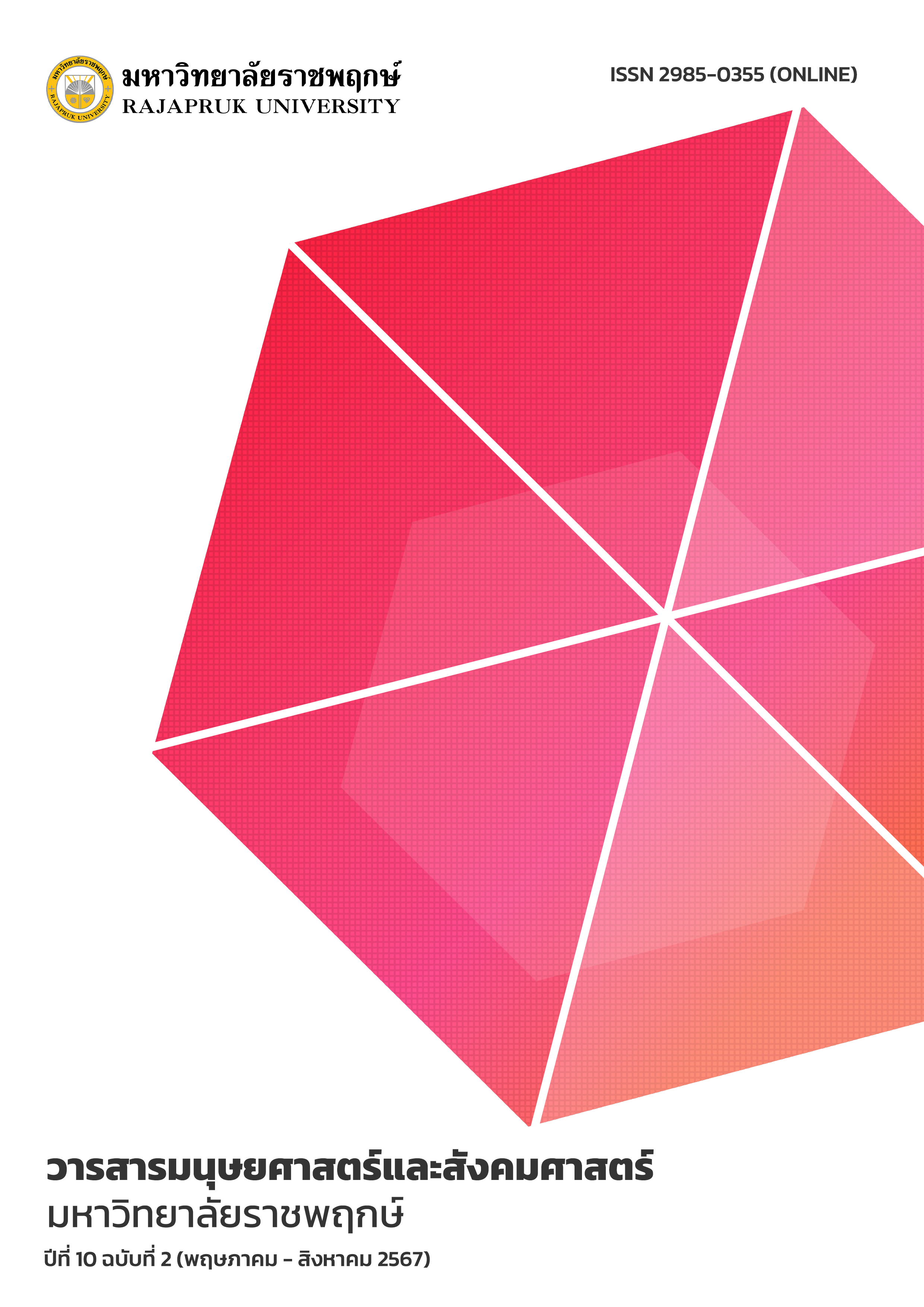The relationship between human capital development and efficiency Work performance of employees in the logistics business in Thailand
Main Article Content
Abstract
ABSTRACT
The Objective of this research was to study the development of human capital potential of employees in businesses. Logistics and operational efficiency of logistics business employees Including testing the relationship between human capital development and employee performance in the logistics business. There was a questionnaire about the relationship between human capital development and employee performance in the logistics business. It is a tool for collecting data from 400 employees working in the logistics business in Bangkok and surrounding areas to test the relationship between human capital development and operational efficiency. using Pearson's correlation coefficient.
The results of the research revealed that the overall development of human capital potential of employees in the logistics business is at a high level. The skills are at the highest level. For attitudes and knowledge, they were at a high level. As for the performance of employees in the logistics business, the overall level is at a high level, with the aspect that is at the highest level being the organization that places importance and interest in developing potential as you would expect. Followed by: Corporate training makes you work with more confidence and increases the quality of your work. The least common issue was that the organization has a work support system that reduces errors in operations. Finally, testing the relationship between human capital development and employee performance in the logistics business. From the analysis of the Pearson correlation coefficient, it was found that the development of human capital potential (knowledge, attitude, and skills) has a positive relationship with the performance of employees in the logistics business. It was found that: Skills has a value of 0.732, which indicates that the development of human capital potential in skills and the performance of employees in the logistics business are related at a high level. For developing human capital potential. The knowledge aspect has a value of 0.580 and the attitude aspect has a value of 0.648, which indicates that the development of human capital potential in knowledge and attitude is related to the performance of employees in the logistics business. and are related at a moderate level businesses should focus on organizing activities that promote the development of learning that leads to practical application in work. As for attitude businesses should have a policy that if employees develop higher competencies, they will be considered for better compensation as well. Finally, skills businesses need to strengthen the communications they use in their operations. Because communication is considered a factor that affects work efficiency.
Article Details
References
กมลรัฐ อินทรทัศน์. (2556). เทคโนโลยีสารสนเทศและทฤษฎีการสื่อสาร. กรุงเทพฯ.: ม.ป.ป
กรมส่งเสริมการส่งออก. (2561). สถิติการค้า. เข้าถึงเมื่อ 17 กันยายน 2564, จากhttps://www.ditp.go.th/ditp_web61/article_sub.php?cate=139&d=0 ;ii
วรรณวิไล ยกย่อง. (2558). ความสัมพันธ์ระหว่างปัจจัยองค์กรกับการพัฒนาทุนมนุษย์เพื่อรองรับการเข้าสู่ประชาคมอาเซียนของพนักงานมหาวิทยาลัยสายสนับสนุน มหาวิทยาลัยราชภัฏกลุ่มภาคตะวันตก. วิทยานิพนธ์. ศิลปศาสตรมหาบัณฑิต. บัณฑิตวิทยาลัย. มหาวิทยาลัยศิลปากร.
ศิริวรรณ เสรีรัตน์และคณะ. (2549). การวิจัยการตลาด. กรุงเทพฯ: ธรรมสาร.
ศศิวิมล แสงสุวรรณ อนิรุทธิ์ ผงคลี และ อัจฉริยา อิสสระไพบูลย์. (2556). ผลกระทบของกลยุทธ์การพัฒนาทุนมนุษย์สมัยใหม่ที่มีต่อประสิทธิภาพการดำเนินงานของธุรกิจโรงแรมในประเทศไทย. วารสารมนุษย์ศาสตร์และสังคมศาสตร์ มหาวิทยาลัยมหาสารคาม, 32(6), 128-138.
สมพิศ สุขแสน. (2556). การประเมินผลโครงการ. อุตรดิตถ์: มหาวิทยาลัยราชภัฏอุตรดิตถ์.
สำนักงานคณะกรรมการพัฒนาเศรษฐกิจและสังคมแห่งชาติ. (2561). รายงานการศึกษาโครงการศึกษาการเพิ่มขีดความสามารถในการแข่งขันของอุตสาหกรรม โลจิสติกส์ไทย. กรุงเทพฯ:
สำนักงานพัฒนาธุรกรรมทางอิเล็กทรอนิกส์. (2561). รายงานประจำปี สพธอ. พ.ศ. 2561 : จากhttps://www.etda.or.th/th/UsefulResource/documents-for-download/ETDA-Annual-Report-2018.aspx
AlQershi, N., Mokhtar, S. S. M., & Abas, Z. (2021). The relationship between strategic innovations, human capital and performance: An empirical investigation. Sustainable Futures, 3, 100056. https://doi.org/10.1016/j.sftr.2021.100056
Arnauld de Nadaillac. (2003). The definition of competencies (online). Retrieved from http://competency.rmutp.ac.th. assessment strategies for the professions. National Office for Overseas Skills.
Bus&Truck. (2018). การพัฒนาทรัพยากรมนุษย์ในธุรกิจขนส่ง เพิ่มศักยภาพแข่งขันยุค 4.0 แหล่งที่มา: https://www.busandtruckmedia.com/7918/
Mondy, R. W. and Noe, R. M. (2005). Human Resource Management. 9th ed. Upper Saddle River, N.J.: Prentice Hall.
Nunnally, J. C. 1978. Psychometric theory. 2nd ed. New York: McGraw-Hill. (หน้าที่ 7)
Rovinelli, R. J., & Hambleton, R. K. (1977). On the use of content specialists in the assessment of criterion-referenced test item validity. Dutch Journal of Educational Research, 2, 49-60.
Yamanae, T. (1976). Statistics an introductory analysis. London: Harper & Low.


